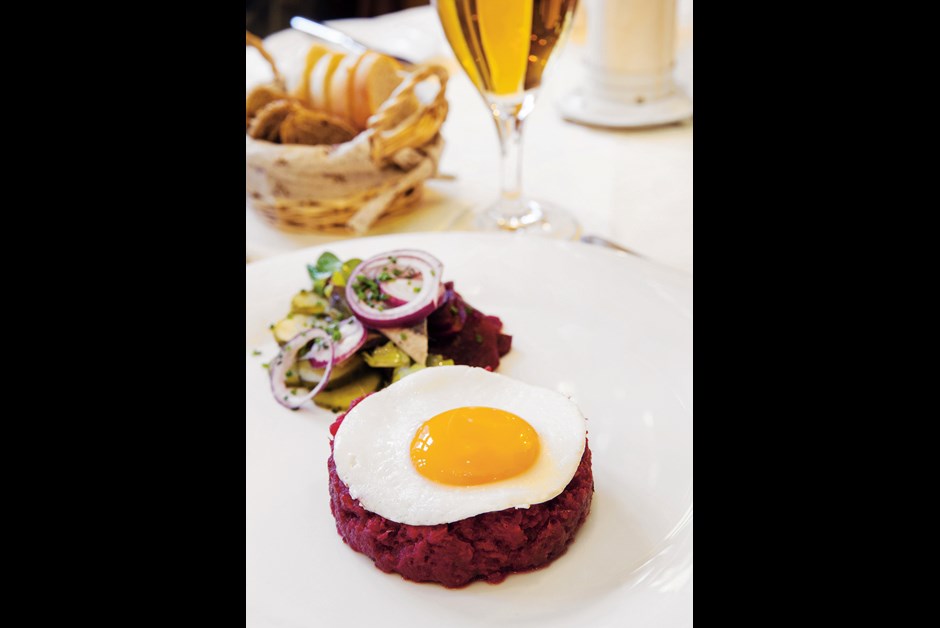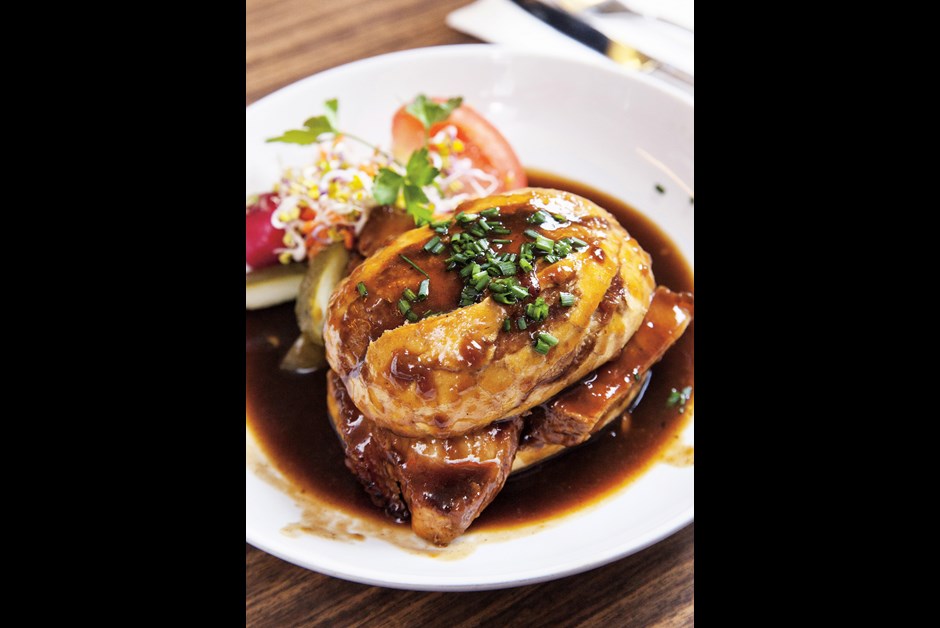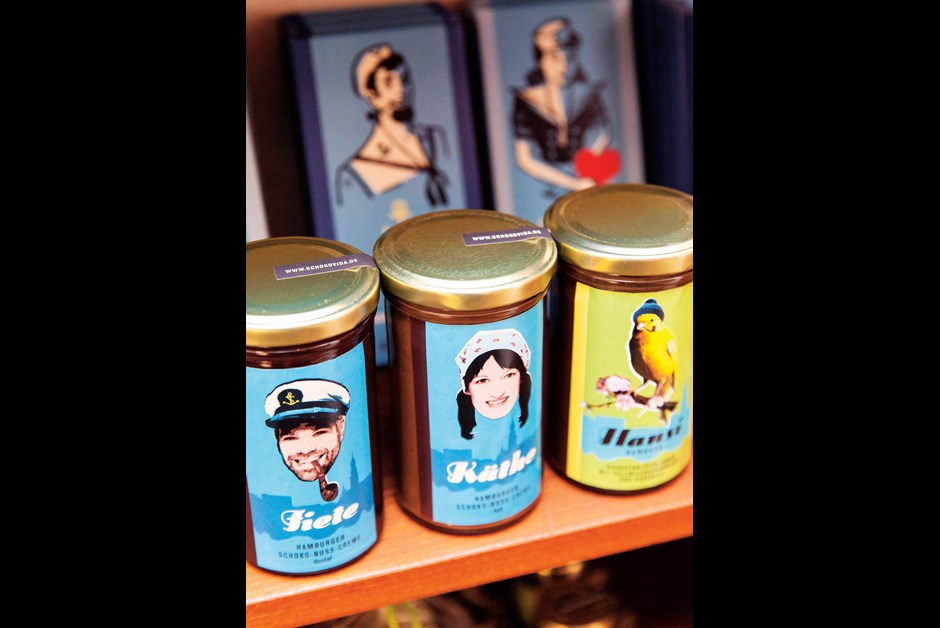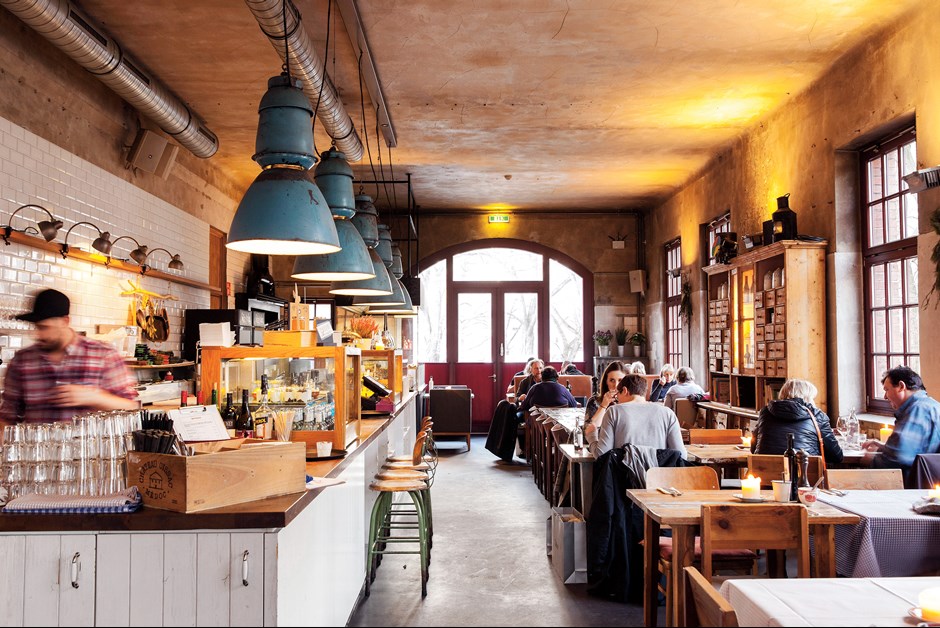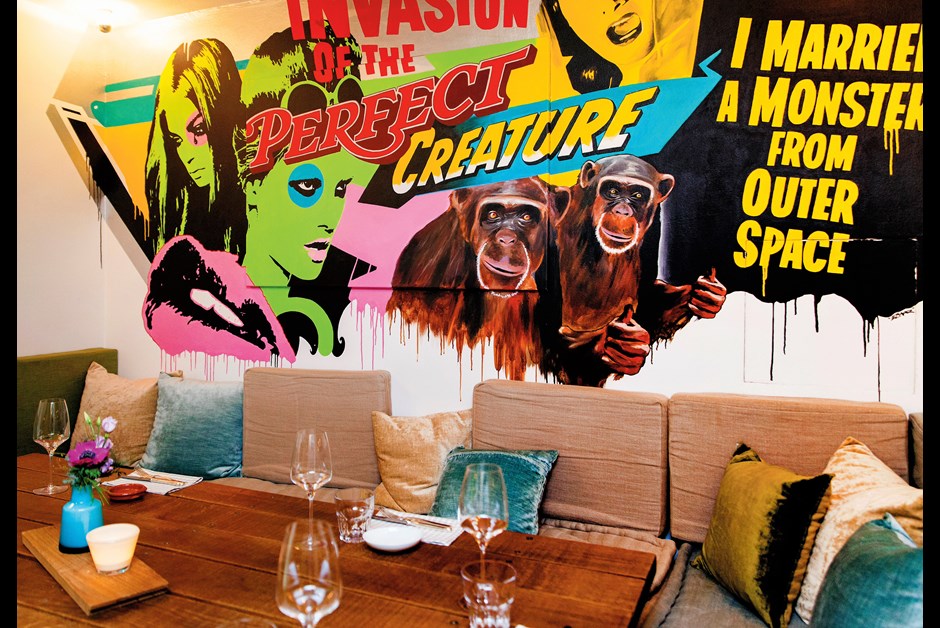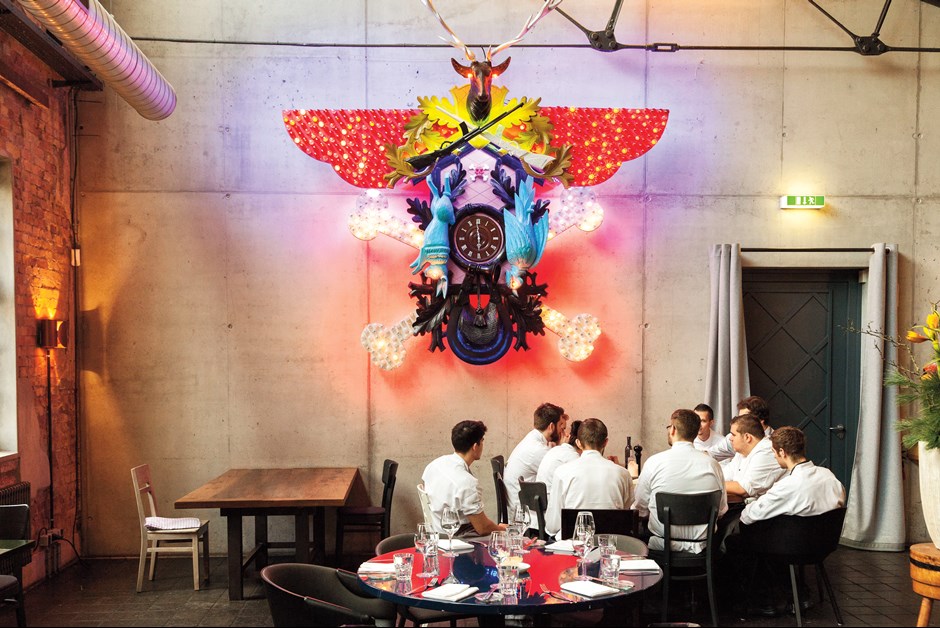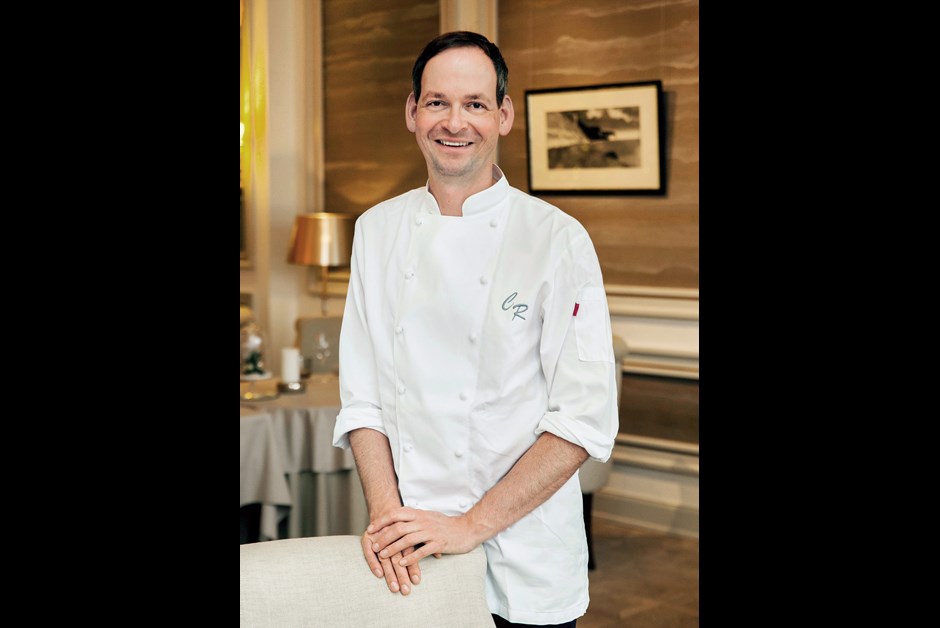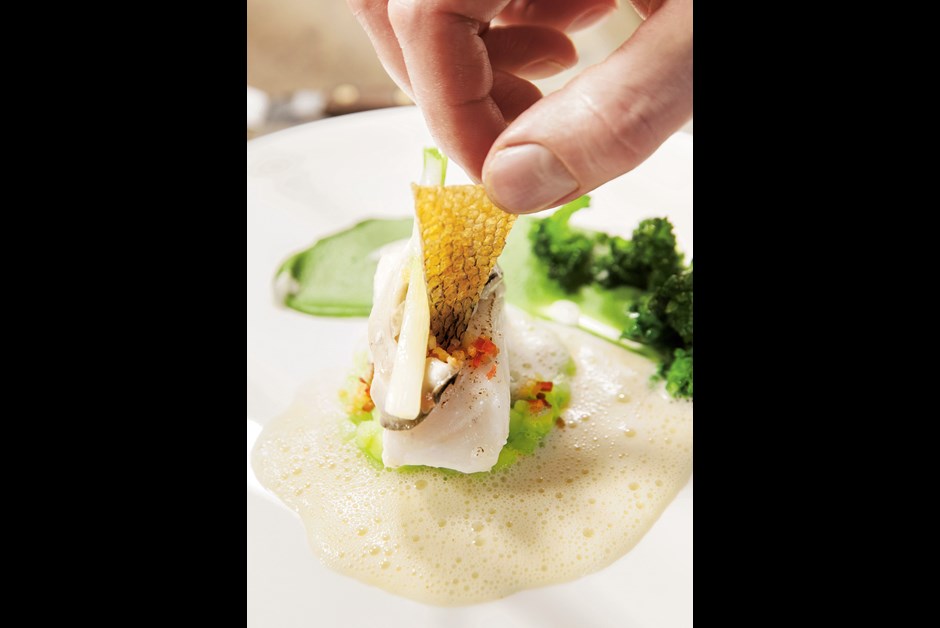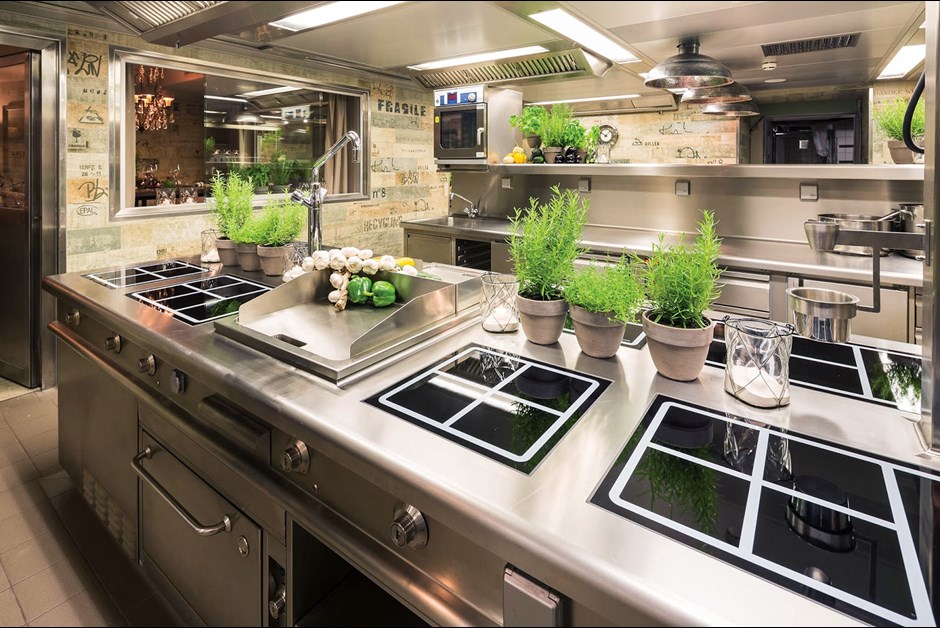The neue Menu
The Neue Menu
Say auf wiedersehen to heavy dishes. From Michelin Stars to burger bars, Hamburg has a fresh definition of German cuisine.
By: Amy Rosen
Photos by: Gunnar Knechtel
The presidential table at Hamburg’s Deichgraf Restaurant is so-called for a small framed photo of Gerhard Schröder, the former socialist chancellor of Germany, smiling down from the pale-yellow wall. The room is intimate and cozy, with dark hardwood, traditional high-back chairs, woven fabrics and sunny windows overlooking a canal. Thies Conle, a tall chef with a gentle smile, was a new arrival to the restaurant when that photo was taken a decade ago. Ever since, he’s witnessed German food evolve right alongside global politics. And he’s contributed to that evolution. Conle’s light-leaning twists on traditional recipes include labskaus, a vibrant local mash-up of potatoes, beets, onion and chopped beef, topped with a fried egg.
“Labskaus is an old sailor food they used to make from salted meat,” Conle explains. “They prepared this when they left Hamburg and would be sailing for two or three weeks. Now it’s a typical dish that just tastes great.” He livens up his version using the best beef, local potatoes and free-range eggs with yolks the color of a July sunset. “Our way is to make food fresher,” he says, “the traditional dishes with fresh ingredients.”
Hamburg is a place where old-world charm and maritime grit come together. Once a gateway for transatlantic passengers and international spice traders, the city on the river Elbe has long been Germany’s window on the world. Today it remains Europe’s third-busiest port, as well as a genteel, walkable city, full of lakes, rivers, canals and more bridges than Venice, Amsterdam and London combined. And though you might spot locals tucking into organic sandwiches and fair trade lattes throughout the day at the city’s chic cafés, don’t mistake Hamburg’s tranquility for a lack of hustle. Germany’s richest city may be demure, wearing its wealth like a fur coat turned inside out, but it’s the country’s financial, media and transportation hub.
That understated vibe extends throughout Hamburg’s dining scene. It may surprise some to learn that Germany is second only to France in its number of Michelin stars, with eight of them here in Hamburg, many of which were earned over the last two years. The sweeping changes to the country’s culinary scene have been fast and far-reaching, transforming almost as quickly as Hamburg’s port-lands skyline. What was once a meat-and-potatoes kind of place is now about freshness, quality and a light touch. Chefs are spinning traditional fare into a modern German cuisine movement. And it’s exciting stuff.
Fairmont Hotel Vier Jahreszeiten, a romantic heritage building located on the banks of the Inner Alster Lake, is the perfect embodiment of Hamburg’s new energy. Recently renovated, it’s as if a boutique hotel set up shop in a grand old dowager. And Christoph Rüffer, chef at its Haerlin Restaurant, is leading the city’s culinary charge. Walking into the two-Michelin-starred beauty is like swanning into a dreamscape of sandy taupe, gold and pale-green hues. The wallpaper is hand-painted Chinese silk, the custom brass wine vault showcases 600 labels and the white-antelope-leather menus detail the meal of a lifetime.
Soon after I’m seated, a trio of miniature artworks appears. The evening’s amuse bouche sees whimsy done right, including a spoonful of “paella”: puffed rice delicately paired with raw local shrimp and crisped chicken skin. It’s followed by a dish of goose liver with mushrooms that looks like a trip through the looking glass; its teardrops and meringues of foie gras and mushroom are all taste, texture and magic. A subsequent plate of oxtail, goosed with Périgord truffle and Meyer lemon, includes a smoked potato mash that’s like velvet on the tongue.
On it goes, through halibut with cockles, verbena and dill hollandaise, to a saddle of fawn with boudin noir, while wonderful local and international wines are paired and poured by our boy-wonder sommelier (he’s infinitely knowledgeable but looks all of 13). Finally, pastry chef Christian Humbs plays with his veggies for dessert, in a gorgeous arrangement of fennel with cranberry, yogurt and oats.
But what really blows my mind about Haerlin Restaurant is the fact that, though each recipe requires a staggering amount of research, thought, time and technique, many of the dishes here change weekly – and the whole menu changes completely each month. To put this in perspective, I’ve eaten at three-star Michelin restaurants that keep many of the same dishes on the menu for decades. “I think for me and for the future, this is the right way – to create a new a-la-carte card every month,” says Chef Rüffer, “so the frequent guests have something new to discover, every time.”
For a very different example of Hamburg’s Michelin-starred offerings, I make my way the next day to the swank Harvestehude district across the lake from Fairmont Hotel Vier Jahreszeiten. The much-lauded owner and namesake of the one-starred Anna Sgroi has a different culinary perspective from her Hamburg contemporaries, as she’s a self-taught female chef, born in Sicily. Her handsome restaurant, housed in a circa-1897 building, serves up Southern Italian dishes using fresh ingredients prepared with a feather touch.
Sgroi’s Ligurian rabbit ravioli is the star of my meal, lively with the salty pop of Taggiasca olives. Meanwhile, the steamed cod with anchovy, crispy capers and cauliflower is a forkable journey through Hamburg’s farmers’ markets. “My kitchen is light,” she explains while sipping a glass of wine, post service. So diners will get ravioli, but not the cheese-stuffed red-sauced variety. “I cook in a light way, but the flavor is strong,” she says. “There’s impact.”
“Hamburg was always an address for good food, but not too overdone,” says Stevan Paul, a Hamburg-based cookbook author and food stylist, as we sip a flight of beer at Braugasthaus Altes Mädchen.
We’re meant to sample “from head to tail,” lightest to heaviest, from the fresh and fruity Zwickel to a dark stout that tastes like coffee and chocolate. “This brewer is a maniac,” Paul declares, explaining that, like with Rüffer’s prolific kitchen, Ratsherrn Brauerei launches a new beer every few months.
The microbrewery anchors a new complex in St. Pauli, a former working-class area that is now home to hip restaurants and a coffee roaster, lending it a Portland-esque vibe, only with less rain and more Lederhosen.
According to Paul, Germans are becoming political about food, just like consumers in many parts of the world: “From the big kitchens down to the street foods, we all want to know more about what we’re eating and where it came from.” At the brauhaus, this translates into a resurgence of craft beers brewed following historic purity laws.
He also points to the beer hall’s neighboring Die Bullerei, a former slaughterhouse-turned-trendsetting restaurant, run by celebrity chef Tim Mälzer, host of the German version of reality show The Taste. Known for its dry-aged steaks, Die Bullerei stands alone with its ethically sourced beef, hipper-than-thou service and pop-art surrounds (check out the neon cuckoo clock in the main dining room). Mälzer is also known for his burgers, ranging from juicy American-style cheeseburgers to more adventurous iterations like one filled with confit pork and a veggie burger with panko-breaded trumpet mushrooms as the patty.
Yes, the burger wars have reached Hamburg, with eight new eateries opening this year alone. But let’s not forget that this is where the humble hamburger began. The hearty sandwich, invented for the city’s port workers, started as slabs of tender braised pork piled onto a bun and doused in a savory brown gravy. (Try it at its best in the Oberhafen Kantine, a 90-year-old restaurant so crooked and wonky inside, you feel dizzy walking up the stairs.) Filling and fatty, it’s knife-and-fork material. In his towering modern creations, Mälzer gives a nod to the original’s meaty abundance – but gracefully leaves out the mess.
A similar reimagining of the classics is afoot at Nil, a neighborhood restaurant housed in a former shoe shop. Nil’s prix-fixe meals are based on the changing of the seasons, with a focus on slow food, seafood and modern German dishes. “Everything is homemade using good ingredients. A lot of handcrafted work,” explains co-owner Elisabeth Fungers, thoughtfully stroking her faux-hawk. This includes dishes such as sweet-and-sour marinated sardines with pine nuts, raisins and arugula (a play on the suz-und-sauer fische traditionally prepared in Jewish kitchens). It also includes the unconventional cooperative spirit of Nil’s 14-chef brigade. “Once Jamie Oliver was here. He went upstairs to say hello and was surprised by what he saw,” she tells me. “He said, ‘So many chefs for such a small restaurant!’ So we are not rich,” smiles Fungers, “but we are happy.”
For a final taste of the German food evolution, I pop by Lokal1, where I’ve heard tales of Chef Hagen Schäfer doing amazing things with seasonal produce. Sure enough, I find mouthwatering match-ups on the daily chalkboard menu, such as beet borscht with duck and dumplings and apple tart with sea buckthorn cream. I also discover a four-play of items containing that most German of supporting dishes, red cabbage. Here, however, the rough brassica leaves aren’t served on the side, but as the core ingredient: a gingery cabbage soup, a croquette filled with sweet-and-sour cabbage, a caramelized cabbage roulade with a red lentil curry, and a crunchy slaw with a zingy lime and fish sauce dressing. Unassuming cabbage, no more!
This dish, this place, is the embodiment of Hamburg’s culinary scene today, where the past is not forgotten, but rather embraced and made anew. After all, without bold thinking and creativity, you’d be left with meat and potatoes – full but with an unfulfilled appetite for all that could be.
